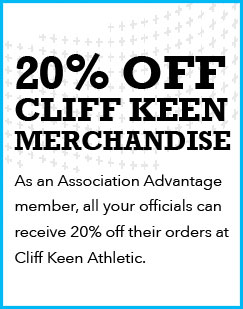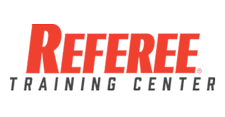By Jerry Grunska
No man is an island; no board is an entity unto itself. If we start from that premise, the first step toward evaluation is to admit that it might be a good thing. Board members should ask themselves: Do we have a sensibly defined purpose and can we examine the elements of that purpose ourselves and come up with useful answers?
For talking points, let’s say a board has a written mission statement that says it will serve schools with qualified officials. The document also says it will assign officials according to skill levels and mesh skill levels with sport levels such as junior varsity and middle school categories. Let’s further say that the board has agreed to set up a productive training program, a recruiting drive for new officials and a mentoring system to orient newcomers and neophytes. A conscientious board could well schedule a brainstorming session in the offseason and simply mull over those issues, being self-critical and self-congratulatory.
I didn’t include in that listing relationships with the state office or influences of other associations. Communications with the state are a necessity, of course. Meeting state deadlines, administering tests, handling lists of officials eligible for playoffs, all of those obligations can be readily identified. If there were shortcomings in those areas, the board can chastise itself for shoddy work.
But other associations? Sometimes there are no other associations with which to compare. Many groups are isolated from metropolitan centers that have multiple associations. In truth, some big cities have only one giant association. Even if there are other associations nearby, the likelihood of one association knowing the intricacies of another association can be rare.
Therefore, unless a board of directors has tentacles in another association (members free to join other groups), board assessment can best be accomplished internally, to some degree.
That some degree, though, is important. “We don’t have much of a training program. How can we develop one or make what we have better? Who are the key people we need to work on this?”
That’s a start. A board can look at itself and say what’s good and what’s less than acceptable. The most important responses to sample, however, are those being served — schools (and maybe athletic clubs) and association members.
In regard to schools, a board is likely to be aware of major difficulties, because schools will report them — and so will officials: officials who show up late to games; officials who make unreasonable demands; officials who pilfer things from locker rooms (we must cover all bases here!); officials who scrape mud off their dirty cleats on the floor or plug up the toilets; coaches who go berserk during games.
There may be some minor things, though, that have gone unnoticed. To gather all essential information, a board can send a simple query, possibly an email, to area athletic directors: “If there were problems that arose with our officials or shortcomings in our services this season, please advise us.” You may find that officials have parked in the superintendent’s allotted space, causing immense chagrin. Maybe officiating assignments haven’t included social security numbers, essential for the accounting department. Perhaps an official showed up whose wife, secretary to the principal at that school, had just been fired for insubordination. In other words, a board should reach out on a periodic basis and gather all information that can ease troubles. As indicated, the board cannot be operating successfully in a vacuum.
The real test, and most valid report card, should come from members. At least once a season members should be given an opportunity to let the board know how it is performing. In many instances board members know, without asking, who the disgruntled individuals are, who are the polished, true-blue stalwart performers, and who are future standouts. But there also may be hidden components, issues that haven’t been broadcast, problems that haven’t surfaced. Here is just one for-instance: Sometimes the serene veterans, happy with their lot, are not agitators. But a steady old-timer may have a constructive idea for an association’s improvement that he has been nursing but not reporting. It is important to excavate possibilities for improvement, from whatever the source. Ferreting out both pluses and minuses may best be done through a general questionnaire.
A checklist is probably not the best instrument to draw out basic issues that need attention. Topics in a questionnaire should be open-ended, so that responders can explain in detail where an association board should focus. The ideal form will ask members to supply answers to gripes in the form of solutions. It is one thing, useful in itself, to obtain criticism for past decisions, but it is more productive to get ideas for moving forward.
Perhaps members want a more elaborate, objective evaluation system. Maybe they see value in restructuring the constitution or in readjusting a policy manual.
Members can be a genuine source of help for a board because they have a heavy emotionally investment in the policies and practices of the association. If there are contentious factions among members, boards are entitled to know that and to figure out ways to cope. Members will surely alert them. Knowledge is power. A good association board will seek that knowledge and not hide its collective head in the sand.
Jerry Grunska, a retired official and educator, is a frequent contributor to Referee. He lives in Evergreen, Colo.





